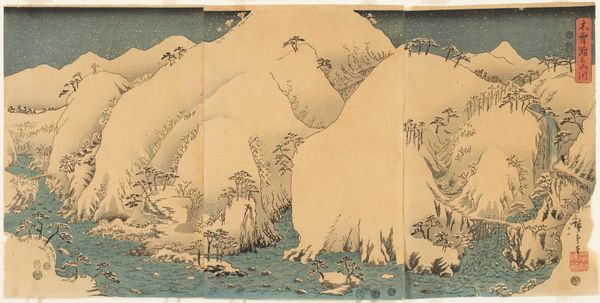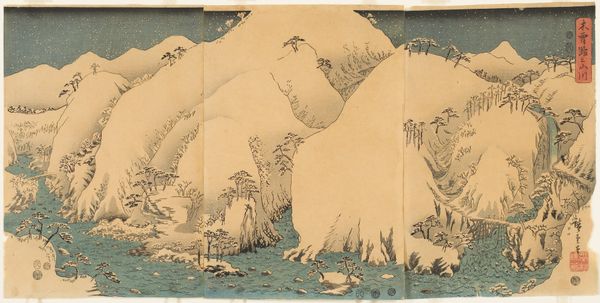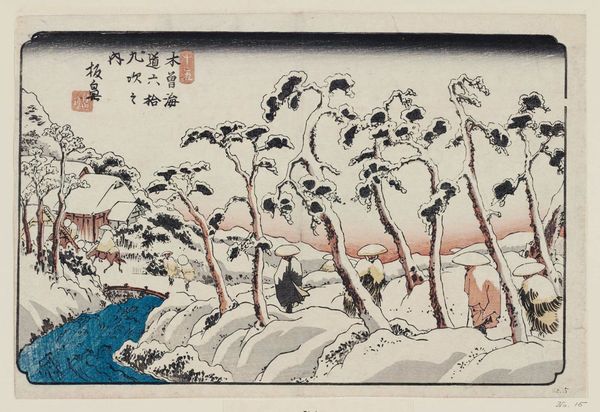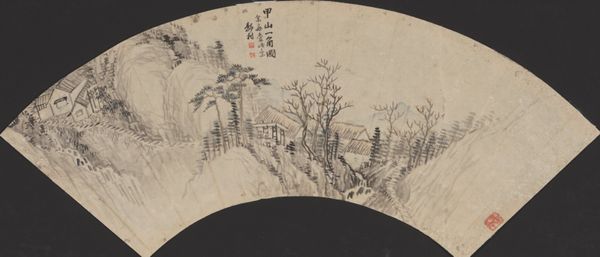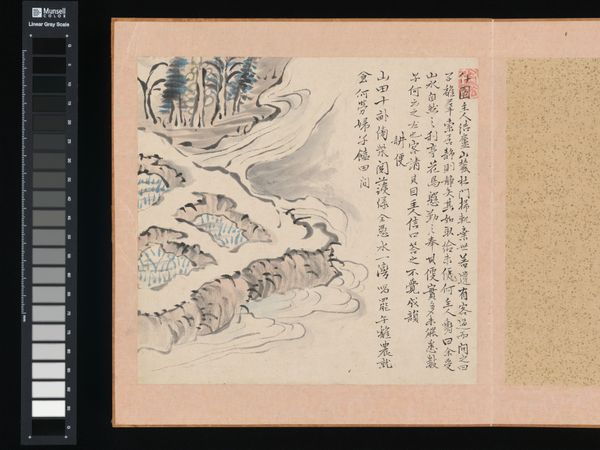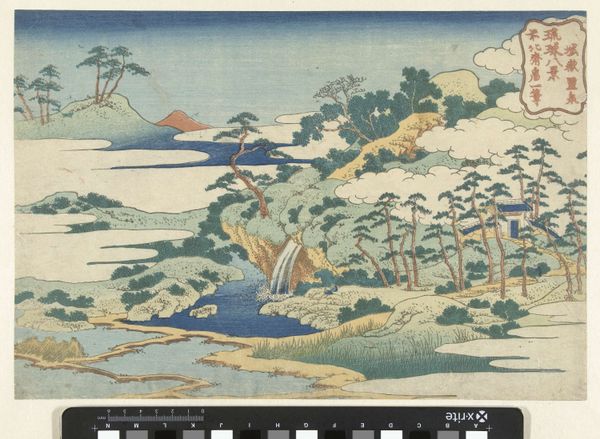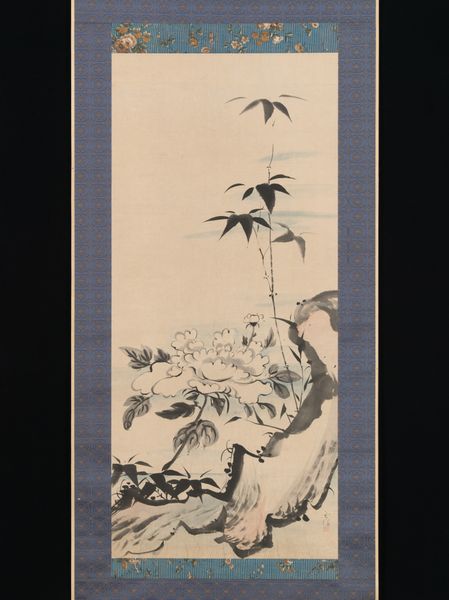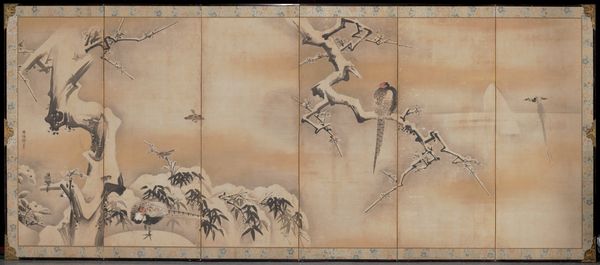
print, ink, woodblock-print, woodcut
#
tree
#
snow
#
toned paper
#
ink painting
# print
#
human-figures
#
asian-art
#
landscape
#
ukiyo-e
#
japan
#
ink
#
woodblock-print
#
woodcut
#
mixed media
#
watercolor
Dimensions: Oban 9 5/8 x 14 7/16 in. (24.4 x 36.7 cm)
Copyright: Public Domain
Curator: This is Keisai Eisen's "Itabana Station," a woodblock print likely created between 1830 and 1840. The artwork is part of the Ukiyo-e tradition. Editor: What strikes me immediately is the almost melancholic stillness. The snow-laden landscape feels heavy, quiet, yet the human figures hint at resilience. Curator: Eisen's print offers a window into the daily lives of people traversing this landscape. Notice how the labor is baked into the environment through print making: the wood itself yields these images. How ink interacts with the paper, the layering of the cut blocks, everything emphasizes the process of material transformation. Editor: Absolutely, and let's consider those human figures. Who are these people braving the winter weather? What social and economic pressures drive them to travel through such harsh conditions? Eisen is depicting not just a scenic view, but also a very particular lived experience, especially with gender being signaled by clothing. Curator: The medium of the woodblock print itself connects this artwork to a larger network of artisanal labor and economic production. The Ukiyo-e tradition was fundamentally tied to a commercial industry—prints were relatively affordable, and consumption drove innovation. Consider too the cultural investment embedded in paper production itself at this period. Editor: Yes, thinking about accessibility allows me to reconsider Eisen's intentions. Were these images made for urban dwellers in Edo—today’s Tokyo—who were, perhaps, distanced from the realities of rural life and the lives of the working class and gender differences there? Curator: The formal qualities really support this line of thought. Note Eisen's attention to detail in capturing the textures of the snow, the bare branches, and the garments of the travelers. Editor: Looking at the social and cultural context enhances my reading of this work. Instead of seeing just a landscape, I understand "Itabana Station" as a visual document reflecting the complexities of Japanese society. Curator: Understanding these connections opens so many interpretive doors to appreciate "Itabana Station." Editor: Indeed, it really deepens one’s understanding of how art is tied to larger structures.
Comments
No comments
Be the first to comment and join the conversation on the ultimate creative platform.
